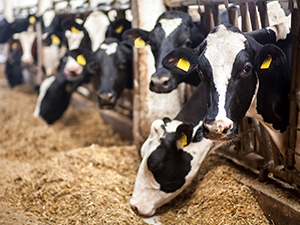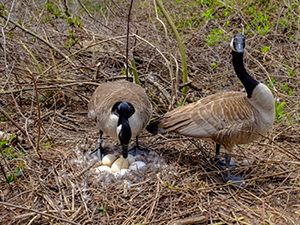Bird Deterrence Backed by Science
Apr 21, 2020Wild Goose Chase offers a wide variety of humane bird management and deterrence tools and techniques. These tools are designed to cause behavioral or physical changes in the species they are targeting.
This means that when Wild Goose Chase brings a specially trained dog to manage your nuisance geese removal or installs a structural deterrent for your pigeons and other birds, a lot of science went in to the selection and use of that deterrent. Our staff biologists regularly review products, tools and techniques. We test them and observe the effects they have on birds. We read peer-reviewed scientific studies to stay current. And we do it all to make sure that we can provide a scientifically sound management plan.
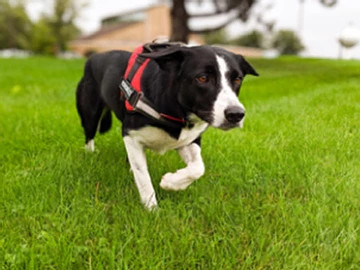
Site Evaluation for Pest Birds
The first step is to determine which birds are present on a property, when they’re there, and why they’ve chosen that site.
Birds choose a site based on four primary needs: food, water, safety, and reproduction. Each species has unique characteristics, needs and behaviors that determine what type of property will satisfy those drives and impact the way that species should be managed.
A bird utilizing a space for nesting needs to be managed differently than one that uses it for resting or feeding. Our staff biologists and bird experts have a thorough knowledge of all area birds, both nuisance and beneficial, so we can develop and implement a customized and scientifically sound management program.
Humane Bird Deterrence that Gets Results
There are three main ways of managing wild birds: exclusion, deterrence, and removal.
- Exclusion: To exclude a bird means to prevent a bird from accessing a certain site. This is usually done by altering the environment with structural tools and techniques. These can include netting or vent covers, or covering a planter so a goose can’t nest there. It can mean fencing off an entry into the property for geese when they are flightless. Exclusion should be targeted to the specific area the bird is using.
- Deterrence: This means discouraging a bird from choosing a particular area. Most deterrents are behavioral in nature, which means that instead of blocking the bird from accessing a place by altering the environment, we are instead changing the way a bird views the environment so it will choose to settle elsewhere. The presence of a predator (like our canines) is a strong behavioral deterrent. Eagle Eye deterrents work by creating a disorienting flash at gulls as they attempt to land. The gulls are still able to land, but the bright light and confusion discourages them from doing so. Autonomic green lasers also provide a fear and harassment aspect. Why green? Because green is the color that birds see best, which makes the lasers far more visible and effective. Deterrence creates conditions that birds want to move on.
- Removal: When birds are already established well beyond the balance the property is able to support, or when the birds are in an area where other tools and techniques won’t work, then removal can be the best option. Removal includes techniques such harassment with handheld lasers or using canines to drive birds off. Other removal techniques include nest removal and egg depredation. By removing the nests, the birds no longer have a reason to stay, so they leave.
Adaptable Birds? No Problem
With all of the tools and techniques that Wild Goose Chase uses to manage nuisance birds, there are some common ones that you won’t see us use in most situations because our biologists have found them to be ineffective. Decoys are an example. Birds are very intelligent and it doesn’t take long for them to realize that a decoy is fake. Many sound devices have similar downfalls, working for a only short period of time before the birds realize that they’re not actually dangerous. These tools are not scientifically sound.
It’s worth repeating: birds are intelligent creatures. There is no one-size-fits-all management strategy. Birds learn and adapt. At Wild Goose Chase, we monitor our management programs with ongoing review of the data. This enables us to adapt and modify techniques as birds learn, ensuring that our efforts remain effective and scientifically sound.
Our clients choose us because we provide results that are safe, cost-effective and tested to ensure no unintended side effects to the birds, other wildlife or the property.
Contact us to learn how we can eliminate bird problems on your property

The predatory stalking posture of border collies when they herd instills real fear of being hunted into the birds and is a behavioral deterrent AND removal technique!
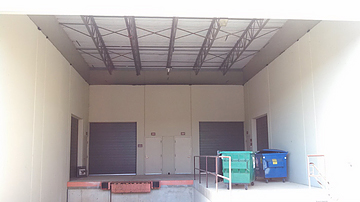
Netting above this loading dock is an exclusion technique that prevents birds from accessing perching areas.

The continuous presence of an autonomic laser is both a deterrent and a removal tool.
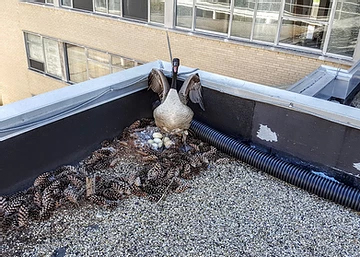
Nest removal done in a humane manner, especially in situations that are dangerous to the bird and humans, can be a very effective way of managing wild birds.
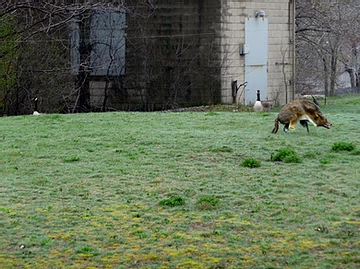
Decoys may work for a very short period of time, but eventually the geese realize they are not dangerous and don’t avoid them.
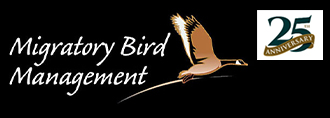


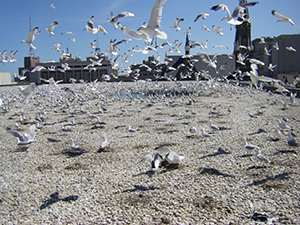
 0
0